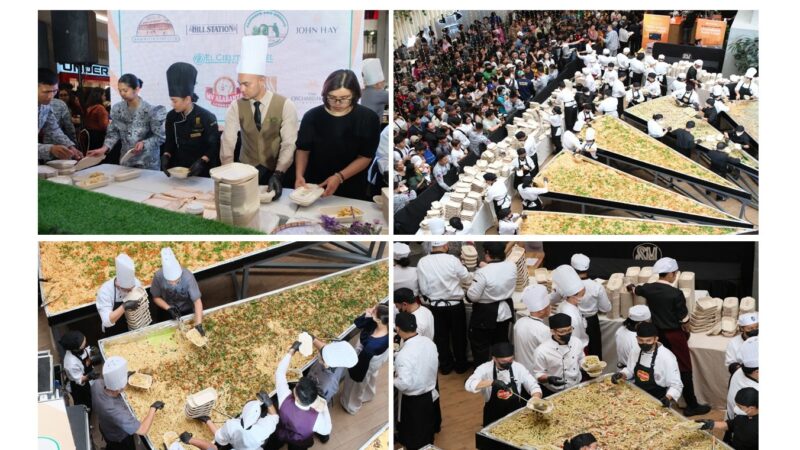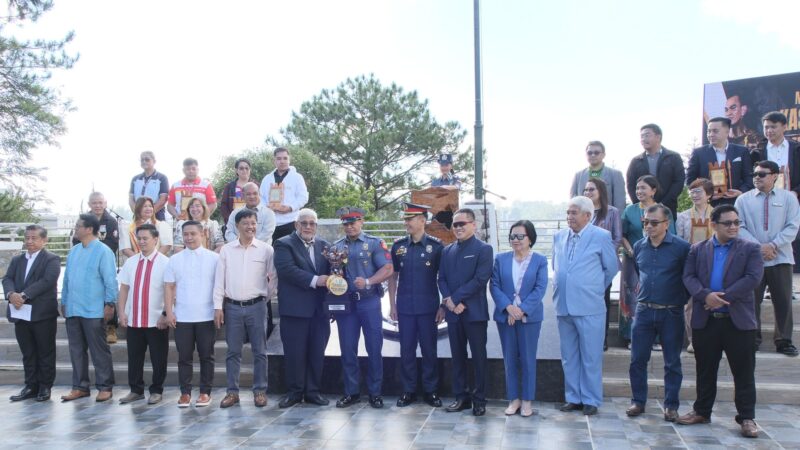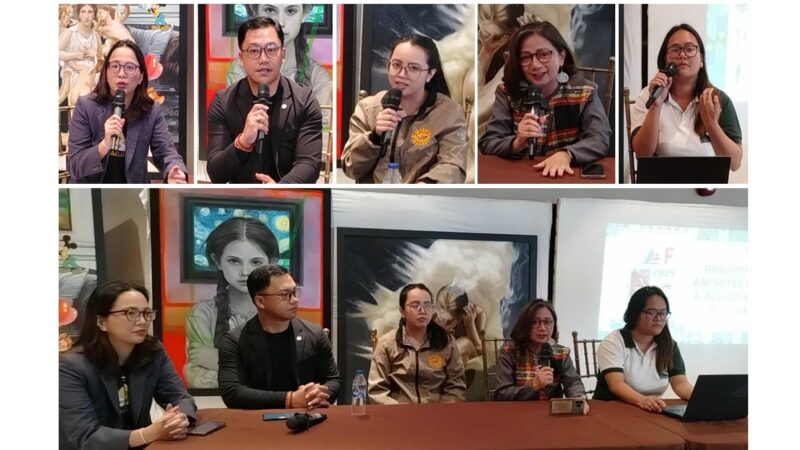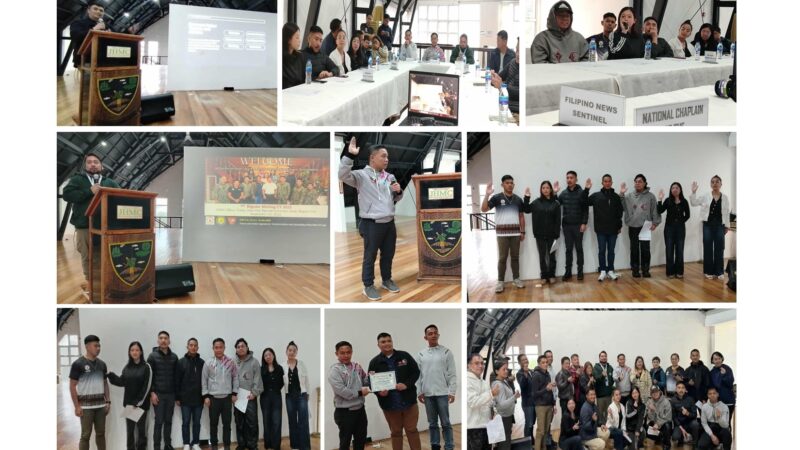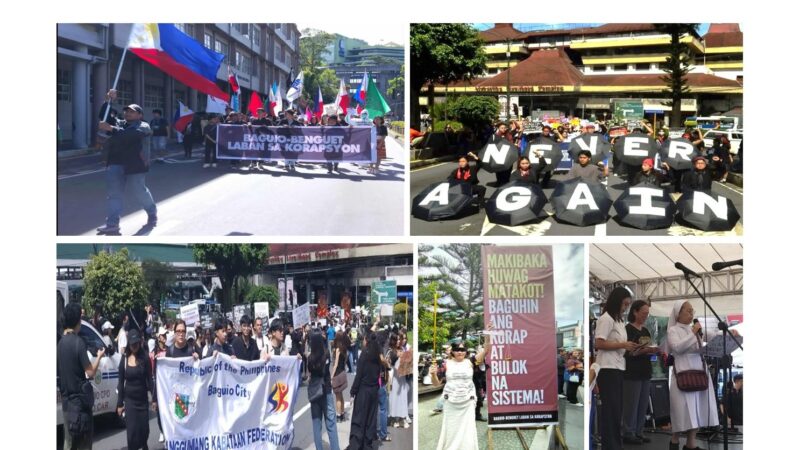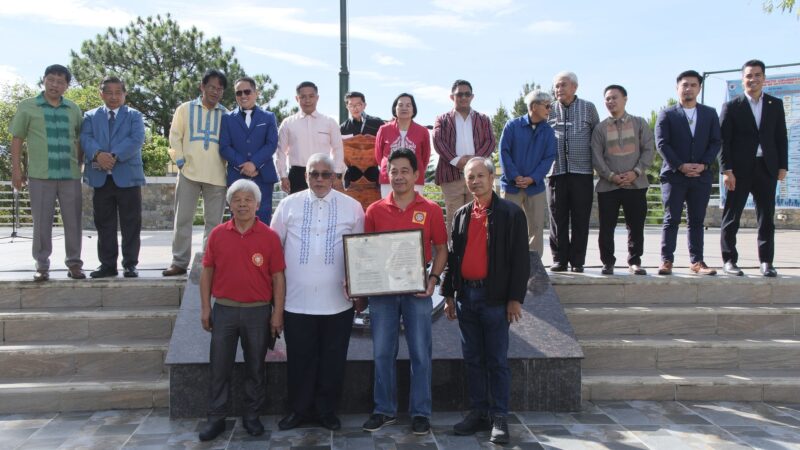Issues on land titling, urban planning discussed
“𝘞𝘦 𝘸𝘰𝘶𝘭𝘥 𝘭𝘪𝘬𝘦 𝘵𝘰 𝘮𝘢𝘬𝘦 𝘴𝘶𝘳𝘦 𝘵𝘩𝘢𝘵 𝘰𝘶𝘳 𝘤𝘩𝘪𝘭𝘥𝘳𝘦𝘯 𝘢𝘯𝘥 𝘰𝘶𝘳 𝘤𝘩𝘪𝘭𝘥𝘳𝘦𝘯’𝘴 𝘤𝘩𝘪𝘭𝘥𝘳𝘦𝘯 𝘸𝘪𝘭𝘭 𝘪𝘯𝘩𝘦𝘳𝘪𝘵 𝘢 𝘤𝘪𝘵𝘺 𝘰𝘧 𝘴𝘶𝘴𝘵𝘢𝘪𝘯𝘢𝘣𝘪𝘭𝘪𝘵𝘺 𝘢𝘯𝘥 𝘯𝘰𝘵 𝘢 𝘤𝘪𝘵𝘺 𝘰𝘧 𝘥𝘦𝘤𝘢𝘺.” -𝘊𝘰𝘶𝘯𝘤𝘪𝘭𝘰𝘳 𝘍𝘳𝘦𝘥 𝘉𝘢𝘨𝘣𝘢𝘨𝘦𝘯
The Sanggunian Panlungsod’s Committee on Urban Planning, Lands, and Housing joined forces with the City Planning and Development Office (CPDO) and other government agencies for the conduct of a forum about the local guidelines and policies on the titling of residential lands under Republic Act No. 11023, otherwise known as the Residential Free Patent act in the City of Baguio.
The forum also focused on the city’s vision towards new sustainable solutions for urban planning problems.
Councilor Fred Bagbagen, Chairperson of the said committee, stressed that land ownership is an essential part of social, political, and economic structures in the city.
“We have to take stock of how much of land is already left, how they may be disposed equally and equitably to a growing population, and how we can fix the failures of urban plannin in order that we may work towards a well-planned, safe, secure, and economically viable city,” Bagbagen stated.
Eng. Benjamin Ventura, DENR-CAR OIC Asst. Regional Executive Director for Technical Services, elucidated the issuance of titles of alienable and disposable lands.
Ventura explained that, in 1986, the ban on the processing of Townsite Sales Applications (TSAs) in the city was lifted by virtue of Administrative Order No. 504.
In 1988, an AO 504 clearing committee was formed and tasked to screen and evaluate all townsite sales applications within the Baguio Townsite Reservation.
Based on the data, of the 26,141 applications, 3,641 were granted clearance and further processed for the issuance of an award and patent at the Community Environment and Natural Resources Office (CENRO) and Provincial Environment and Natural Resources Office (PENRO). More than 13,000 applications were rejected because of non-conformity to existing policies. Currently, there are more than 6,000 applications that are in different stages of processing. Around 2,000 applications are pending due to ancestral land claims and protests.
Applications that were cleared undergo investigation, appraisal, publication and sale through public auction before the issuance of a sales patent by the PENRO. The proceeds from the sales of these TSAs are remitted to the city government. The total remittance since Year 2000 to date now amounts to P211 million.
Requirements for TSA at the AO 504 level are the following:
Two blueprint copies of survey plan (with vicinity map/location map); two copies of 2×2 ID picture with a name tag; certificate of non-homelot/non-property; (from the City Assessor’s Office, City Hall) one original copy; one photocopy of either a voter’s ID, birth certificate or marriage contract; one copy each of two different angles of the pictures of the land applied for including improvements and access roads; documentary stamp; filing fee (php 50.00); one photocopy of two government-issued ID; and one long clean white folder and a plastic fastener.
Of the 5,752 hectares as the total land area of Baguio City, a total of 2,068 hectares is approximated for alienable and disposable titling, Ventura said.
However, based on the Mines and Geosciences Bureau (MGB) Geo-Hazard Map presented by Ventura, 87% of the area of Baguio CIty is marked with high landslide susceptibility. Some of these areas are highly critical.
In consideration to the findings of the geohazard data provided by the MGB, the DENR-CAR came up with a rough estimate of 267 hectares that are within areas with low and moderate landslide susceptibility as the remaining alienable and disposable lands for titling.
Engr. Leandro De jesus, OIC CENR Officer-Baguio, was the second resource speaker. He explained the process of application for the residential free patent. To be accepted for processing, the application for a free patent has to be in compliance with the provisions of Batasang Pambansa 220 and Presidential Decree 958 and with the zoning classification.
The Free Patent Act or Republic Act No. 10023 is a law authorizing the issuance of free patents on residential lands. It was signed into law by President Gloria Macapagal Arroyo on March 9, 2010.
Free patent is the acquisition of public lands intended to legalize the undocumented private land rights of Filipinos occupying and cultivating such lands for a certain period of time.
Under RA 10023, any Filipino citizen who is an actual occupant of a residential land for at least 10 years may apply for a free patent title. Only one application is allowed per applicant.
For a highly urbanized city like Baguio, a maximum of 200 sq.m can be titled for free patent.
Free Patent on Residential Land covers all lands that are zoned as residential areas, including town sites as defined under the Public Land Act, provided that none of the provisions of Presidential Decree No. 705 shall be violated. Furthermore, it covers all public lands zoned as residential, townsites and residential lands in delisted or abandoned military camps and reservations.
The requirements for the application of free patent are approved survey plan, technical description, affidavit of two disinterested persons; and proof that the land is zoned as residential. The application shall be filed at the CENRO.
To date, a total of 2099 free patents and 12 special patents were issued in the city. Special patents are intended for government properties.
As an interlude to the next discussion, Councilor Betty Lourdes Tabanda, a member of the committee, expressed hope that the forum would address challenges in the application for a public land.
“I hope we will be able to find ways and means to speed up the processing of TSAs without sacrificing the quality of the application process. We need to hasten the process but we need to ensure that every application will pass through the concerned offices and agencies,” Tabanda said.
Arch. Donna Tabangin, City Planning and Development Coordinator, presented a number of observations and suggestions on public land disposition applications in the city.
Tabangin challenged the government agencies and offices to think beyond their mandate and work together to correct past failures in terms of urban planning.
The comprehensive land use plan (CLUP), the comprehensive development plan (CDP), and the zoning ordinance are considered as the city’s road maps towards sustainable urban development, Tabangin stressed.
The issues and concerns presented by the CPDO chief were classified into five clusters.
Cluster 1 calls for the development of guidelines and minimum standards on land characteristics and sustainability in the screening, evaluation, and acceptance of land applications such as minimum and maximum lot area, minimum accessibility, standard road geometry,and assessment of easement for waterways, hazard areas, and environmental buffer zones, among others.
Tabangin challenged existing practices that are problematic and pointed out dismal results of non-compliance to set guidelines. She also called for a revisit of existing requirements and their modification in order to curb problems in the city’s urban design.
“We cannot allow this to happen. It has to stop somewhere,” she said.
Cluster 2 is on the development of survey maps with uniform information and scale. This will help authorities assess the geographical conditions of sites for buildings and linkages of lots and roads, Tabangin said.
Cluster 3 is on co-developing settlement subdivision plans for the areas where group applications are observed.
Tabangin suggested that applicants should accept proposals for readjustments in consideration to the welfare of the entire locality/barangay. These adjustments may be done incrementally, she said.
Cluster 4 zeroes in on agreements for solutions on non-compliance of applications regarding the construction of the improvements as well as the ownership of the lands being applied for.
Problems arising from non-compliance puts people’s lives in danger and results in a grotesque urban landscape, Tabangin stressed.
Cluster 5 focuses on setting up a monitoring and evaluation of strategy to identify success and lapses in the course of planning.
Tabangin concluded her talk with a reminder to the participants who happened to be government employees and officials.
“Together, we can solve these problems. Let us not allow urban decay to take over our city,” Tabangin remarked.
Offices and agencies that were in attendance in the consultation to give their inputs were City Buildings and Architecture Office, City engineering Office, City Assessor’s Office, City Legal Office, Department of Public Works and HighWays, CENRO Baguio, and DENR-CAR.
Former City Architect Joseph Alabanza was also present in the consultation to give his recommendations for policy-making.
The public consultation was facilitated by Jonalyn Pagada, Head of Agenda and Information Management Division of the Sangguniang Panlungsod. -Jordan G. Habbiling

